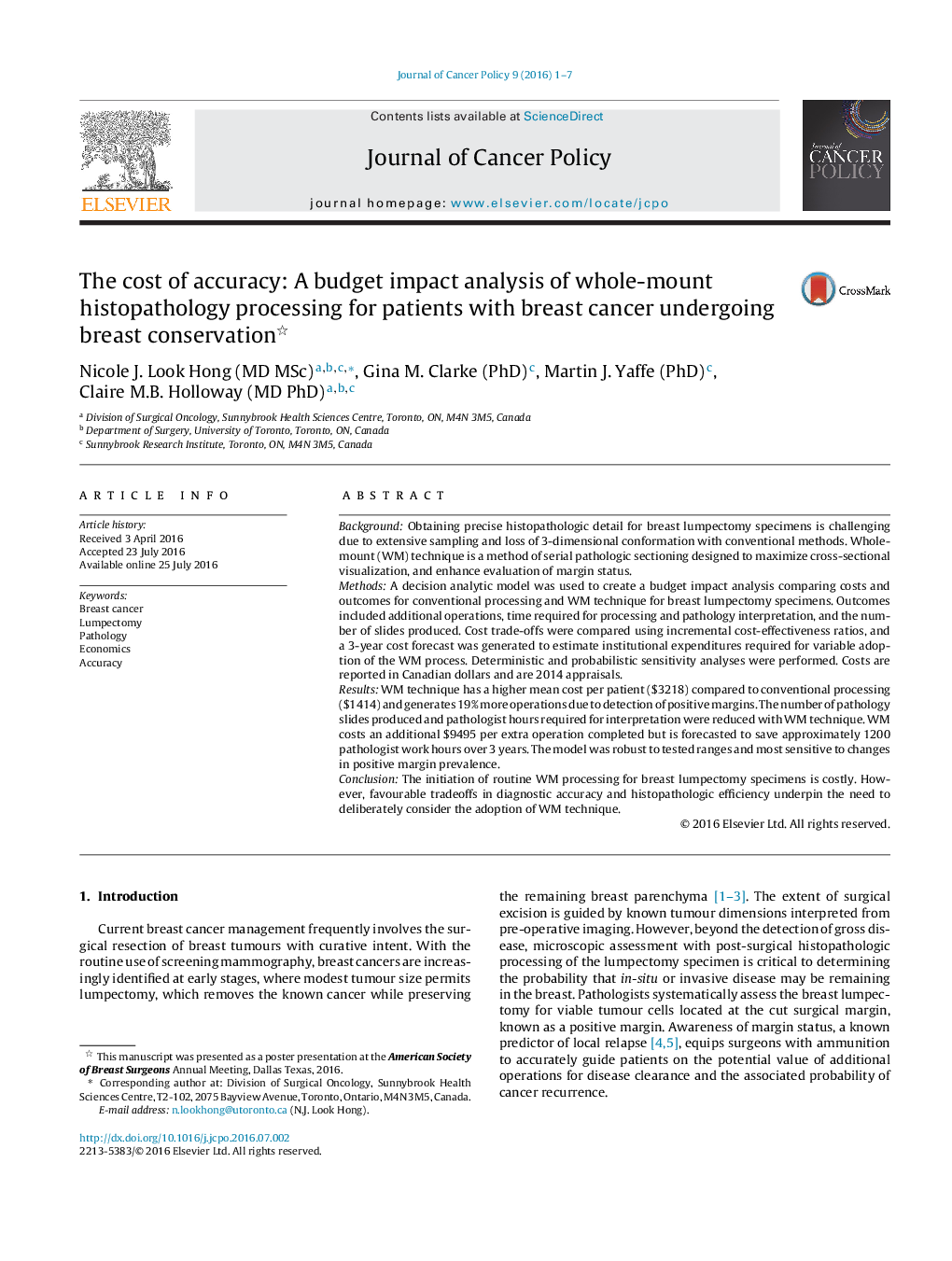| Article ID | Journal | Published Year | Pages | File Type |
|---|---|---|---|---|
| 3988686 | Journal of Cancer Policy | 2016 | 7 Pages |
•Whole mount (WM) processing for breast conserving surgery specimens is more costly than conventional processing, and generates more positive margins and therefore 19% more surgical procedures must be absorbed by the heath care system.•Favourable WM trade-offs include improved assessment of tumour size and margin status, and fewer required pathologist interpretation hours.•Adoption of routine WM processing depends on a heath system’s willingness to pay for pathologic accuracy.
BackgroundObtaining precise histopathologic detail for breast lumpectomy specimens is challenging due to extensive sampling and loss of 3-dimensional conformation with conventional methods. Whole-mount (WM) technique is a method of serial pathologic sectioning designed to maximize cross-sectional visualization, and enhance evaluation of margin status.MethodsA decision analytic model was used to create a budget impact analysis comparing costs and outcomes for conventional processing and WM technique for breast lumpectomy specimens. Outcomes included additional operations, time required for processing and pathology interpretation, and the number of slides produced. Cost trade-offs were compared using incremental cost-effectiveness ratios, and a 3-year cost forecast was generated to estimate institutional expenditures required for variable adoption of the WM process. Deterministic and probabilistic sensitivity analyses were performed. Costs are reported in Canadian dollars and are 2014 appraisals.ResultsWM technique has a higher mean cost per patient ($3218) compared to conventional processing ($1414) and generates 19% more operations due to detection of positive margins. The number of pathology slides produced and pathologist hours required for interpretation were reduced with WM technique. WM costs an additional $9495 per extra operation completed but is forecasted to save approximately 1200 pathologist work hours over 3 years. The model was robust to tested ranges and most sensitive to changes in positive margin prevalence.ConclusionThe initiation of routine WM processing for breast lumpectomy specimens is costly. However, favourable tradeoffs in diagnostic accuracy and histopathologic efficiency underpin the need to deliberately consider the adoption of WM technique.
